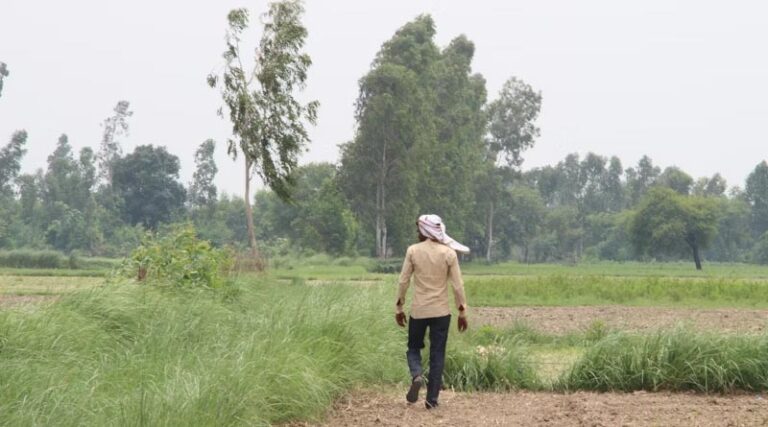
Haryana Maintains Subsidized Power Tariff for Farmers Amid Rising Operational Costs
27 June 2025, Chandigarh: In a major relief to the agricultural sector, the state of Haryana in India has confirmed that there will be no increase in electricity tariffs for farmers for the financial year 2025–26. Haryana’s Power Minister Anil Vij clarified that despite the recent tariff revisions announced by the Haryana Electricity Regulatory Commission (HERC), agricultural consumers will continue to pay subsidized rates, ensuring that rising power procurement and operational costs do not affect farming activities.
No Change in Agricultural Tariffs
Minister Vij stated that the power tariffs for agricultural consumers remain unchanged from previous years. Metered agricultural connections will continue to be billed at ₹0.10 per unit, while flat-rate connections are charged ₹15 per BHP per month. To further ease the burden, the state government has reduced the Minimum Monthly Charges (MMC) — now set at ₹180 for connections up to 15 BHP and ₹144 for connections above 15 BHP. These consistent low tariffs reflect the state’s continued commitment to farmer welfare and the sustainability of rural livelihoods.
Clarification on Domestic Consumer Bills
Responding to public concern and rumors of excessive hikes in electricity bills, Minister Vij firmly denied any fourfold increase. He emphasized that such claims are misleading and not supported by facts. Instead, he pointed out that a large majority of domestic consumers—94 percent—fall under Category-I and Category-II, where either no increase has occurred or there has actually been a decrease in the bill amount compared to 2014–15.
Consumers in Category-I, which includes households with up to 2 kW of connected load and monthly usage up to 100 units, have seen a reduction in their electricity bills ranging from 49 percent to 75 percent since 2014–15. For Category-II consumers, with connected loads up to 5 kW, there has been a slight increase of 3 to 9 percent compared to the previous year (2024–25), but overall, bills remain lower than a decade ago. Category-III consumers, who represent only 6 percent of the domestic base, have experienced a modest rise of 5 to 7 percent in their bills this year.
Additionally, the state government has removed the Minimum Monthly Charges for all domestic categories, offering further relief to households across the state.
Haryana’s Power Tariffs Remain Lower Than Neighboring States
The minister highlighted that Haryana continues to offer one of the lowest electricity tariffs in the region, both for domestic and industrial users. For domestic consumers, fixed charges in the state range from ₹0 to ₹75 per kilowatt, with a maximum energy charge of ₹7.50 per unit. In comparison, neighboring states charge up to ₹110 per kilowatt in fixed charges and up to ₹8 per unit in energy charges.
For industrial consumers, the state has implemented moderate increases this year. High Tension (HT) tariffs have risen by 7 to 10 percent, while Low Tension (LT) tariffs have gone up by 4 to 7 percent. Despite these adjustments, Haryana’s HT and LT fixed charges remain significantly lower than those in surrounding states, where fixed charges reach up to ₹475 per kilowatt for HT consumers and ₹450 per kilowatt for LT users. Energy charges in those states also touch ₹7.75 to ₹8.95 per unit, well above Haryana’s revised rates.
First Tariff Update Since 2017–18
The current tariff revision, effective from April 2025, is the first in Haryana in seven years. According to the HERC order dated March 28, 2025, the revision was deemed necessary due to increased power procurement costs and rising operational expenses. However, Minister Vij credited improved operational efficiency, fiscal discipline, and regulatory oversight for keeping tariffs stable over the past decade.
He also noted that Haryana has made significant progress in reducing Aggregate Technical and Commercial (AT&C) losses. These losses, which stood at 29 percent a decade ago, have been successfully brought down to 10 percent, reflecting better electricity distribution and financial management within the state’s power sector.
Minister’s Advisory to Consumers
Minister Vij urged consumers to compare their current electricity bills with the same month from the previous year, instead of relying on month-to-month comparisons. This, he said, would offer a clearer view of consumption trends and ensure better understanding of actual changes. He reiterated that Haryana’s power distribution companies are dedicated to providing uninterrupted, consumer-friendly services, and that the government remains focused on ensuring both urban and rural energy affordability.
Continued Commitment to Rural and Agricultural Power Support
Haryana’s decision to maintain stable tariffs for the farming community is seen as a major step in supporting agricultural productivity. By ensuring affordable and reliable electricity, the state reinforces its long-term strategy to empower rural economies and sustain food production. As energy costs rise globally, Haryana’s model offers an example of balancing fiscal discipline with farmer-centric policy, setting a benchmark for other regions.
Also Read: Five Indians Recognized in 2025 Top Agri-Food Pioneers List by World Food Prize Foundation
📢 If You’re in Agriculture, Make Sure the Right People Hear Your Story.
Have a story the global agriculture industry should hear? From product launches to strategic announcements, Global Agriculture offers unmatched visibility across international agri-business markets. Connect with us at pr@global-agriculture.com to explore editorial and advertising opportunities that reach the right audience, worldwide.






